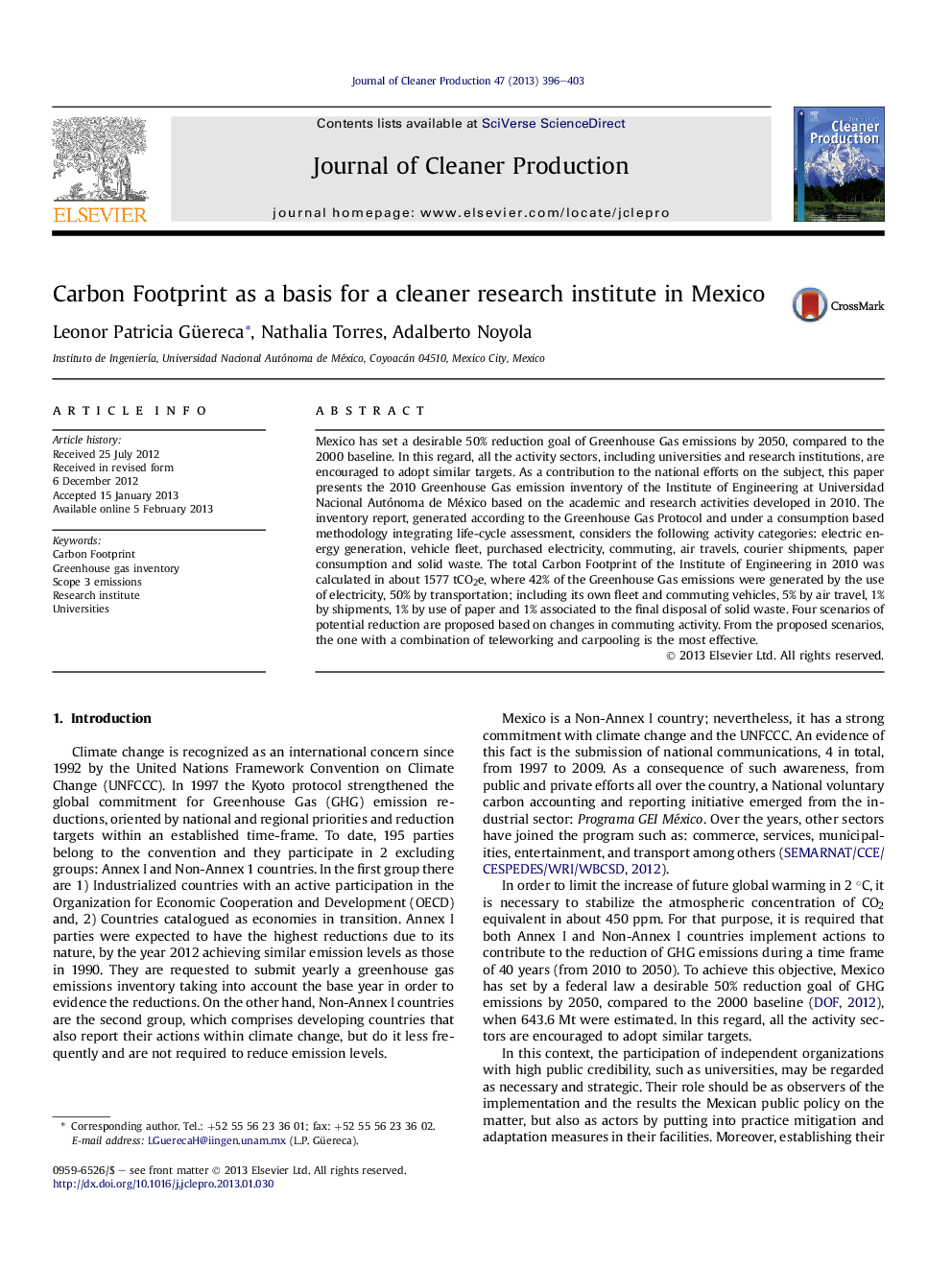| Article ID | Journal | Published Year | Pages | File Type |
|---|---|---|---|---|
| 1745503 | Journal of Cleaner Production | 2013 | 8 Pages |
Mexico has set a desirable 50% reduction goal of Greenhouse Gas emissions by 2050, compared to the 2000 baseline. In this regard, all the activity sectors, including universities and research institutions, are encouraged to adopt similar targets. As a contribution to the national efforts on the subject, this paper presents the 2010 Greenhouse Gas emission inventory of the Institute of Engineering at Universidad Nacional Autónoma de México based on the academic and research activities developed in 2010. The inventory report, generated according to the Greenhouse Gas Protocol and under a consumption based methodology integrating life-cycle assessment, considers the following activity categories: electric energy generation, vehicle fleet, purchased electricity, commuting, air travels, courier shipments, paper consumption and solid waste. The total Carbon Footprint of the Institute of Engineering in 2010 was calculated in about 1577 tCO2e, where 42% of the Greenhouse Gas emissions were generated by the use of electricity, 50% by transportation; including its own fleet and commuting vehicles, 5% by air travel, 1% by shipments, 1% by use of paper and 1% associated to the final disposal of solid waste. Four scenarios of potential reduction are proposed based on changes in commuting activity. From the proposed scenarios, the one with a combination of teleworking and carpooling is the most effective.
► We developed the emissions inventory for a research institution in Mexico. ► The inventory allowed the calculation of carbon performance indicators. ► Mobility activities represent the half of the total emissions. ► Reduction scenarios were proposed based on the results of the inventory.
